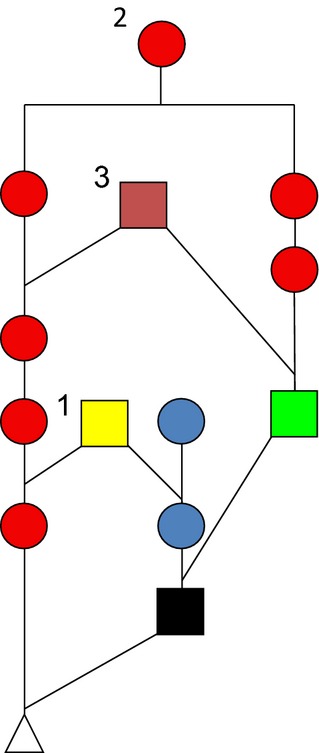Fig. 6.

Pedigree illustrating how intralineage polygyny increases inbreeding coefficients. Squares represent males, with different colours or shades representing different males. Females are represented by circles, and the offspring whose inbreeding coefficient is to be calculated is represented as the white triangle. The parents of this offspring are not only aunt–half-nephew (loop 1) and half third-cousins (loop 2); but also, because an aunt and her half-niece both mated with the blue male (loop 3, intralineage polygyny), half first-cousins once removed. Therefore, the inbreeding coefficient for this individual is 0.0625 + 0.0019525 + 0.015625 = 0.08008.
